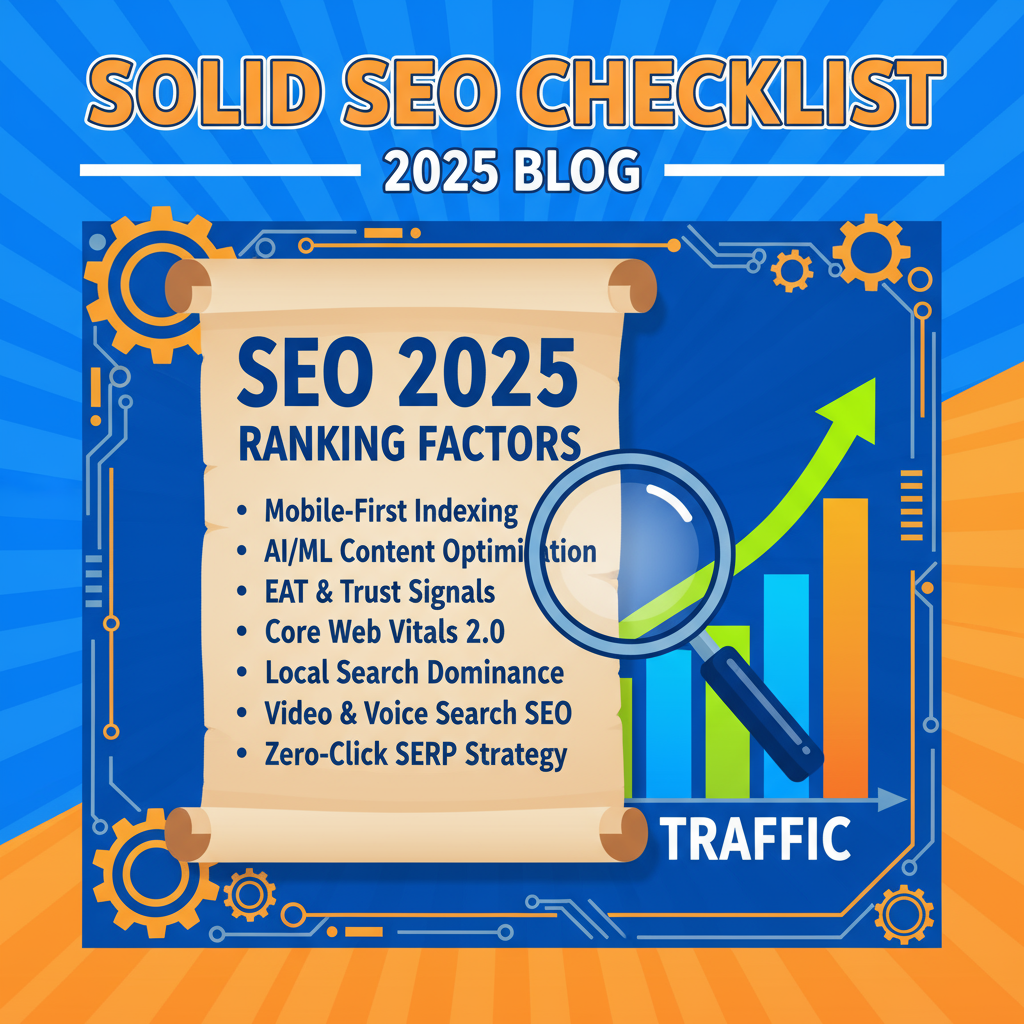
Index
- Quick summary — what this guide covers
- What are article submission sites & why use them?
- Safety-first rules: what to avoid (Google-safe link building)
- How to get the most from article submissions (strategy overview)
- Categories of article submission platforms
- Curated list — article submission sites with direct links (by category)
- Step-by-step submission process (beginner → expert)
- Content & submission templates (article outline, author bio, pitch)
- Scheduling, tracking & measurement (30/60/90 plan + spreadsheet columns)
- Advanced tactics (repurposing, tiered strategy, outreach, syndication)
- How to audit resulting links & when to disavow
- Common mistakes & how to avoid them
- FAQ — short answers to common questions
- Final checklist & next steps
- Appendix: quick copy/paste list of submission URLs
1 — Quick summary
This guide is for marketers, content creators, and site owners who want a practical, safe, and repeatable system to publish articles on third-party platforms that can drive traffic, build brand awareness, and (when used correctly) help SEO. You’ll get a curated list of reputable article submission platforms, step-by-step instructions, templates to copy, and an advanced playbook for scaling.
2 — What are article submission sites & why use them?
Article submission sites (also called article directories, publishing platforms or contributor networks) let you publish long-form content, guides, or opinion pieces on an external domain. Benefits include:
- Referral traffic — readers discover your content on the host site and click through to your website.
- Brand exposure & authority — publishing on reputable platforms builds credibility.
- Indexation aid — new content syndicated on multiple domains can help pages get discovered faster.
- Lead generation — include CTAs, lead magnets, or author bios with links back to landing pages.
- Guest contributor & outreach opportunities — start relationships with editors and communities.
Important: article submission is not a magic SEO shortcut. Quality, relevance, and editorial value must come first. Many accepted platforms use nofollow links or moderation, but the real value can be exposure and audience more than raw link juice.
3 — Safety-first rules (avoid penalties)
Before submitting anywhere, follow these rules:
- Quality over quantity. One well-placed article on a relevant high-quality site is better than dozens of low-value submissions.
- No spinning, no duplicate content. Don’t paste the same article across many directories verbatim — that’s duplicate content. Either write unique posts or substantially tailor syndicated versions with canonical tags where possible.
- Avoid link farms & automated mass-submission services. Manual, selective submissions are safer.
- Vary anchor text & avoid exact-match anchor overuse. Use brand, URL, or descriptive anchors.
- Disclose sponsored content when required by the host’s policy.
- Follow site guidelines (word count, image policy, author bio rules). Respect moderator edits.
Google cares about useful, original content for users — so your submissions should serve readers first.
4 — How to get the most from article submissions (strategy)
Use article submission as part of a broader content amplification strategy:
- Identify goal — traffic, leads, brand awareness, or niche authority.
- Map audience to platforms — choose sites where your target readers already hang out.
- Create cornerstone content — long, practical, research-backed guide on your site.
- Syndicate selectively — republish shortened/summarized or repurposed versions on third-party sites with a canonical link pointing to your original where allowed, or add an introductory note linking back.
- Use author bios & CTAs — always include a clear CTA and link to a relevant, conversion-optimized landing page (not always the homepage).
- Track & measure — use UTM parameters in your links to measure referral traffic, leads, and conversions.
- Nurture relationships — respond to comments, thank editors, and offer exclusive content later.
5 — Categories of article submission platforms
- High-authority publishing platforms / contributor networks (higher editorial standards)
- Article directories (traditional directories that accept submitted articles)
- Niche industry blogs & communities (targeted audience)
- Q&A & expert networks (long-form answers) — long answers with references
- Slide & document sharing (repurpose articles into slides/PDFs)
- Content syndication platforms (allow republishing with canonical setup)
6 — Curated list — article submission sites with links
Note: Site policies change. Always review each platform’s editorial guidelines before submitting. Below are widely used and reputable platforms to consider. Submit selectively and customize each submission.
A. High-authority publishing platforms / Contributor networks
These have editorial value and can drive meaningful traffic and credibility.
- Medium — https://medium.com
- Large built-in audience; you can publish original or republished content (use canonical tags if republishing).
- LinkedIn Articles — https://www.linkedin.com
- B2B audiences; articles show up in profiles and feeds for professional readers.
- Substack — https://substack.com
- Newsletter-first platform — publish articles and build subscribers.
- Vocal.Media — https://vocal.media
- Multiple niche communities and monetization options.
- Dev.to — https://dev.to (for developer content)
- Strong developer community; good for technical articles.
B. Established article directories / general publishers
These accept submissions and have categories for different topics.
- EzineArticles — https://ezinearticles.com
- ArticleCube — https://www.articlecube.com
- ArticlesFactory — https://www.articlesfactory.com
- SooperArticles — https://www.sooperarticles.com
- SelfGrowth — https://www.selfgrowth.com/articles
Tip: Many traditional directories are lower-impact today — use them for niche distribution and brand mentions rather than expecting strong SEO gains.
C. Niche & industry publishing platforms
Find niche platforms relevant to your industry (examples by vertical):
- Marketing / Business: GrowthHackers (https://growthhackers.com), MarketingProfs (https://www.marketingprofs.com) — often require pitches or contributor status.
- Design / Creative: Behance is portfolio-first (https://www.behance.net) and can accept project write-ups.
- Tech / Startups: Hacker Noon (https://hackernoon.com) accepts tech stories; TechCrunch requires editorial pitching and is tiered.
- Finance / Legal / Healthcare: Look for industry journals, professional associations, and authoritative blogs.
D. Slide & document sharing (repurpose articles)
Repurposing into slides/PDFs increases distribution and provides backlinks in descriptions.
- SlideShare — https://www.slideshare.net
- Scribd — https://www.scribd.com
- Issuu — https://issuu.com
E. Q&A & long-form expert answers
Long, value-packed answers can rank and drive traffic.
- Quora (Quora Blogs / Spaces) — https://www.quora.com
- Stack Exchange / StackOverflow (where topical) — https://stackoverflow.com (for developer-focused content)
- Medium (publications run Q&A style or deep dives) — https://medium.com
F. Content syndication & republishing platforms
These platforms allow republishing but check canonical or rel=canonical support to avoid duplicate content issues.
- Outbrain / Taboola partner publishers — often require paid promotion; not strictly article submission.
- Guest posting sections on high-authority blogs — not directories but valuable editorial links.
7 — Step-by-step submission process (Beginner → Expert)
Beginner: quick wins (first 30 days)
- Identify 3 goals: traffic, leads, or brand awareness.
- Create 1 cornerstone article on your site (1,500–3,000+ words) optimized for a focus keyword and conversions.
- Pick 3 platforms: Medium, LinkedIn Articles, SlideShare (repurpose).
- Publish unique versions or republish with canonical tags to your original if platform supports it.
- Include author bio & CTA: short bio (30–50 words), link to a landing page with a UTM code.
- Promote via social channels and email.
Intermediate: scaling (30–90 days)
- Identify 10 niche platforms in your industry (blogs, forums, directories).
- Write 2–4 tailored versions of your cornerstone article for different audiences (case study, how-to, listicle).
- Pitch guest posts to high-authority blogs; follow their contributor guidelines.
- Repurpose content into slides, infographics, and short posts. Submit to SlideShare, Scribd, and visual platforms.
- Build relationships with editors — comment on their posts and share their content.
Expert: advanced & ongoing (90+ days)
- Run data-driven article campaigns: original research or surveys that naturally attract links.
- Conduct outreach campaigns (broken-link building, skyscraper method) to sites that link to similar content.
- Use a tiered promotion strategy: editorial placements (tier 1) → web2.0 reposts & SlideShare (tier 2) → social bookmarks & shares (tier 3) for indexing.
- Syndication partnerships: negotiate republishing agreements with niche publishers, ensuring canonical tags.
- Scale editorial production with a small team or freelancers and measure ROI by referral/conversion, not only link metrics.
8 — Content & submission templates
Article outline template (long-form, SEO-friendly)
- Title (keyword + benefit)
- Short intro (answer the user’s core question in 1–2 lines)
- Explain the problem / context (H2)
- Step-by-step solution (H2 with H3 substeps)
- Examples / case studies (H2)
- Tools & resources (H2)
- Common mistakes (H2)
- Conclusion + CTA (H2)
- Author bio (with 1 link to landing page)
Author bio template (50–70 words)
[Your Name] is [title] at [Company]. He/She helps [target audience] [benefit]. Read more at [Landing Page URL — use UTM]. Connect on [LinkedIn].
Submission pitch template (guest post outreach)
Subject: Guest post proposal — “[Proposed Title]”
Hi [Editor Name],
I enjoyed your recent article on [topic]. I’d love to contribute a practical post to your audience: “[Proposed Title]” — it covers [one-sentence summary] and includes original examples and templates. I’m happy to tailor the post to your guidelines. Sample of my work: [link]. Looking forward to your thoughts.
Thanks,
[Name] — [Company] — [Email] — [Short credibility line]
9 — Scheduling, tracking & measurement
30/60/90 plan (high level)
- Days 0–30: Create cornerstone article, submit to Medium, LinkedIn, SlideShare. Create 3 unique guest post pitches.
- Days 31–60: Publish 4 targeted guest articles; repurpose into slides/infographics; start outreach for broken-link replacements.
- Days 61–90: Run one data-driven article/survey and pitch to larger publishers. Track backlinks and conversions.
Tracking spreadsheet columns
Platform | Submission URL | Username | Password (secure) | Date Submitted | Live (Y/N) | Referral Sessions | Conversions | Notes
Measure success via: referral traffic (GA4/UA), time on page, conversions from UTM-tagged links, and editorial quality (comments, social shares).
10 — Advanced tactics & growth playbook
- Skyscraper approach: find a popular article in your niche, create a more comprehensive version (better data, visuals), then outreach to sites linking to the original asking them to consider yours.
- Broken-link building: use tools to find dead resource links on relevant pages and offer your article as a replacement.
- Original research: create unique data (surveys, studies) — highly linkable.
- Syndication with canonical: negotiate republishing where the host adds a
rel=canonicalto your original to prevent duplicate content issues. - Guest author series: pitch a multi-part series to a high-authority publication to build authority over time.
- Repurpose for communities: condense article into a tutorial or checklist for community platforms (e.g., GrowthHackers, IndieHackers).
11 — How to audit resulting links & when to disavow
- Monitor inbound links with Google Search Console, Ahrefs, SEMrush or Moz.
- Evaluate quality: domain authority, topical relevance, traffic — and whether links are editorially placed.
- Contact webmasters to remove suspicious links before considering disavow.
- Use disavow only as a last resort — most sites don’t need it. Keep records of outreach attempts and the date of removal requests.
12 — Common mistakes & how to avoid them
- Submitting duplicate content across many platforms → write unique versions or add value.
- Using exact-match anchor text too often → vary anchor text.
- Targeting only low-quality directories → prioritize relevance/authority.
- Ignoring editorial guidelines → read and follow each site’s submission rules.
- Not tracking results → use UTM parameters and analyze referral performance.
13 — FAQ
Q: Do article submission links help SEO?
A: They can help indirectly (traffic, visibility, topical mentions). Some are nofollow, but brand signals and referral traffic still matter. Quality and relevance are the keys.
Q: How many article submissions should I do per month?
A: Start small — 3–6 high-quality submissions per month. Scale only if you can maintain quality and diversify platforms.
Q: Can I republish the same article on multiple platforms?
A: Yes, but either use canonical tags (if the host supports it), or substantially modify the version published on other sites and include a link to the original.
Q: Are article directories dead?
A: Not dead — many are low-impact today, but some niche directories and reputable platforms still provide value for discovery and niche referrals.
14 — Final checklist & next steps
- Create or identify cornerstone article on your site.
- Choose 5 high-quality platforms from this guide and submit unique versions.
- Repurpose into SlideShare + Scribd and upload.
- Track all submissions in a spreadsheet with UTMs.
- Run outreach for 10 broken-link or guest-post opportunities.
- Measure referral traffic & conversions monthly; prune low-performing channels.
15 — Appendix — Quick copy/paste submission list
High-authority platforms
- https://medium.com/
- https://www.linkedin.com/ (Articles / Pulse)
- https://substack.com/
- https://vocal.media/
- https://dev.to/ (developer content)
Article directories
- https://ezinearticles.com/
- https://www.articlecube.com/
- https://www.articlesfactory.com/
- https://www.sooperarticles.com/
- https://www.selfgrowth.com/articles
Slide & document sharing
- https://www.slideshare.net/
- https://www.scribd.com/
- https://issuu.com/
Communities & Q&A
- https://www.quora.com/
- https://growthhackers.com/
- https://www.reddit.com/ (subreddit rules apply)
(Remember to check each site’s submission and content policy before publishing.)
Closing
Article submission is a powerful tool when used thoughtfully: it supports traffic growth, authority building, and relationship development with editors and communities. Use the beginner→expert plan above, measure results, and focus on high-quality content and relevant distribution rather than mass submissions.









